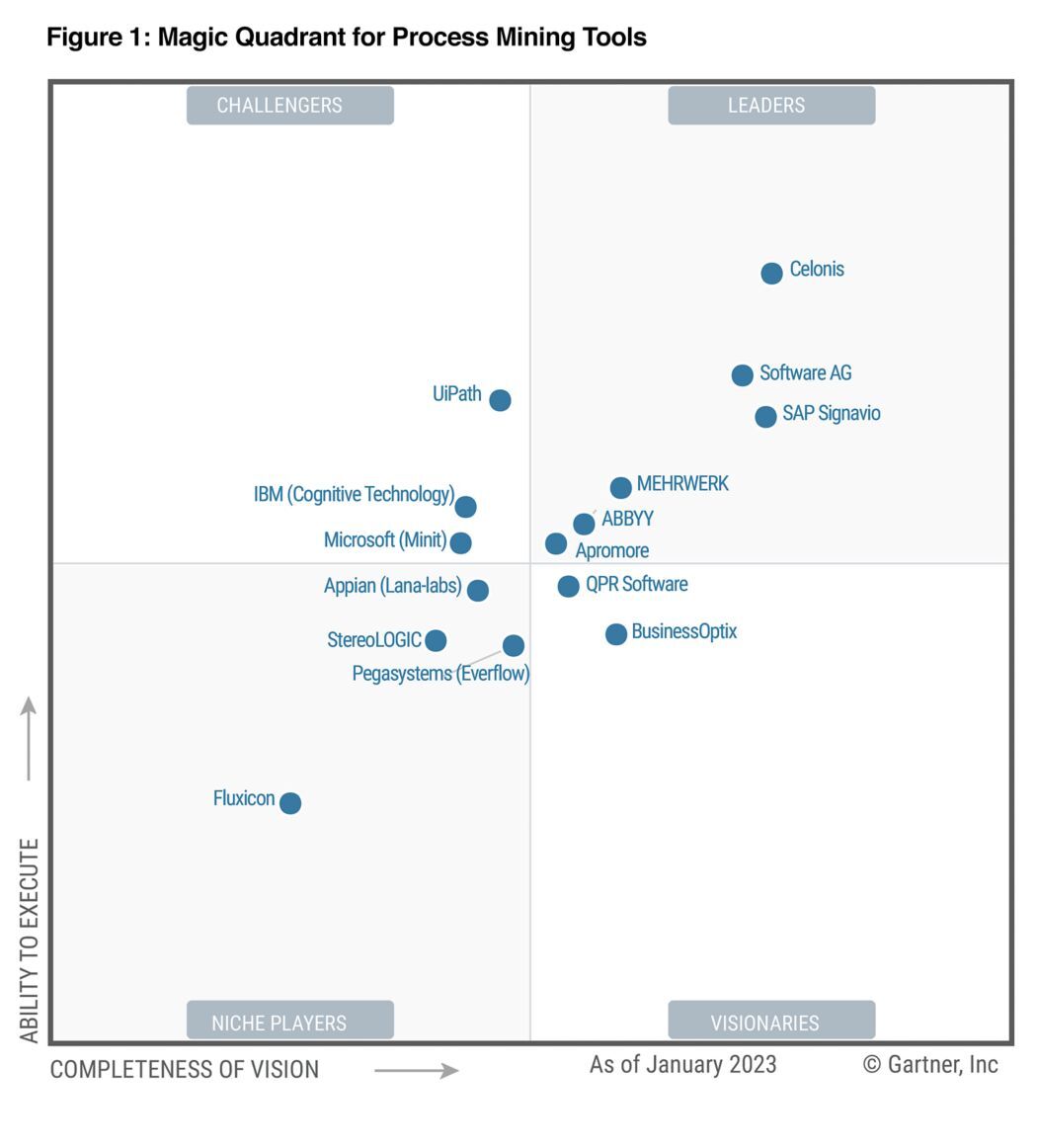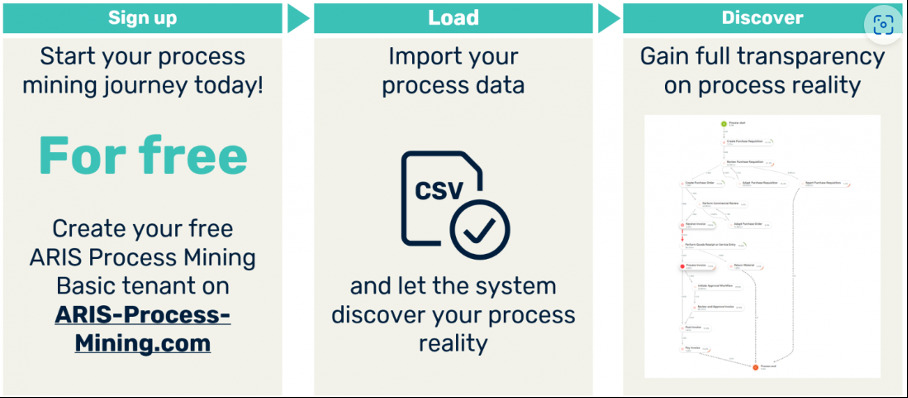Introduction to Process Mining
Organizations have always been focused on process improvements & automation to avoid mistakes, increase efficiency, reduce lead times and ultimately achieve higher customer satisfaction.
In recent years, the use of robots (RPA) and the use of artificial intelligence (AI) solutions have added extensive automation opportunities. This so-called hyper-automation trend continues, in particular, to further reduce costs and risks.
The first step in process improvement tracks is to model the existing processes. The traditional approach for process documentation was one to talk to the different process users and/or start from existing process documentation. However, the complexity of current processes makes it impossible for users to know and master all possible process variations.
In recent years, new technology has matured, and process mining programs use existing data logs to extract the process steps/tasks; the software is able to display all possible process steps in a visual way, allowing further analysis.
The largest advantage of process mining is that literally all possible process flows are mapped out. The process mining software can easily draw out dozens of scenarios. For a human being, this is an impossible task.
The software can then facilitate a thorough analysis. With the help of visual components and a flexible selection, a person can analyse the process from any angle. Correlated data can reveal individual cases and thus show weaknesses, errors or pain points and automation opportunities.
In an improvement trajectory, these shortcomings can be eliminated. In addition, the performance of the process can be measured by looking at peaks and troughs over time and taking measures to pursue operational excellence. The ultimate goal remains that all process steps are carried out as efficiently and as automated as possible.
When the ideal process has finally been drawn up, it is possible to continuously monitor its implementation with the help of the software. Because the software is linked to the existing data logs of the IT systems, it is a breeze to compare new versions of the process with the ideal process. This compliance check (or conformity) is another advantage of the process mining tool. It allows the company to say with certainty that a process was or was not followed and why.
The DynaFin Business Process Management (BPM) Experts use the ARIS software for this, developed by Software AG, named a Leader in the 2023 Gartner® Magic Quadrant™ for Process Mining Tools.

Business Process Management (BPM)
From the above, it becomes clear that process mining will help an organization to set up a clear business process management governance. The process mining software takes away the modelling of the various process steps, this was often the biggest effort in a BPM exercise, and the result often ended up in a drawer gathering dust.
The analysis of the different process variations remains with the process analyst. He will identify process shortcomings and propose improvements. It is the owner of the process who will have to make decisions on changes: splitting up the process, simplifying it or removing exceptions; these are just some of the possible next steps he can take.
To do this in a controlled way, the organization will have to step into a growth trajectory to map all possible interfaces with other systems, users or processes. A central tool is indispensable for this.
ARIS Process Mining
Software AG’s integrated and scalable ARIS Process Mining tool allows easy integration with almost any data source and setup of a seamlessly connected enterprise to apply the deep use of AI technology (Root Cause Miner) for quick, data-driven insights. The software supports a company’s data-driven decision-making regarding continuous process improvement initiatives by providing real-time or near-real-time insights into process performance.
It allows organisations to monitor processes, detect deviations, and proactively address issues, leading to ongoing optimisation and better business outcomes. Furthermore, process mining can support compliance efforts by providing detailed insights into process execution and adherence to regulatory requirements. It makes it much easier to identify non-compliant activities and implement measures to ensure adherence to regulations and policies.
How to get started?
DynaFin Consulting integrates the ARIS process mining software with your existing IT infrastructure and systems, such as enterprise resource planning (ERP), customer relationship management (CRM) systems or core banking/insurance platforms.
We support our clients in gathering the relevant data for process mining. This data can come from various sources such as transactional systems, databases, log files, or any other system that tracks process-related information. This typically includes event logs or transactional data that capture the sequence of activities, timestamps, and additional attributes associated with each process instance.
Our consultants clean and preprocess the data to ensure its quality and consistency. This may involve removing duplicates, handling missing values, standardising data formats, and aligning data from different sources. Next, the preprocessed data are transformed into an event log format, which is a chronological record of process-related events. Each event in the log should contain information such as activity name, timestamp, case ID (identifying the process instance), and additional attributes relevant to your processes. These event logs are used to create automated data extraction flows to load the data into the process mining software.

Overall, process mining techniques provide organisations with valuable insights into their business processes, enabling them to optimise process efficiency, reduce costs, improve customer satisfaction, and achieve better overall business performance.
Want to learn more about Process Mining?
Our Process Mining experts are happy to discuss further and develop a proof of value together. For more information, contact gregory.rogival@dynafin.be
